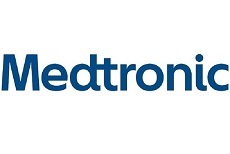 Medtronic has announced US Food and Drug Administration (FDA) approval and first US implants of the SenSight Directional Lead System, which is used for deep brain stimulation (DBS) therapy. SenSight is a first-of-its-kind DBS directional lead that combines the benefits of directionality with the power of sensing, allowing physicians to deliver precise, patient-specific DBS therapy for the treatment of some symptoms associated with movement disorders like Parkinson’s disease, dystonia and essential tremor, and medically-refractory epilepsy, according to a Medtronic press release.
Medtronic has announced US Food and Drug Administration (FDA) approval and first US implants of the SenSight Directional Lead System, which is used for deep brain stimulation (DBS) therapy. SenSight is a first-of-its-kind DBS directional lead that combines the benefits of directionality with the power of sensing, allowing physicians to deliver precise, patient-specific DBS therapy for the treatment of some symptoms associated with movement disorders like Parkinson’s disease, dystonia and essential tremor, and medically-refractory epilepsy, according to a Medtronic press release.
“Until now, sensing capability and directional leads have not been available in the same DBS system, so we have had to choose one technology or the other, based on the predicted needs of each patient,” said Kelly D Foote, professor of neurosurgery at the University of Florida in Gainesville, USA. “Now, by coupling this new directional lead with a pulse generator capable of brain sensing, we are excited to be able to offer our patients the synergistic benefits of both technologies. Furthermore, the ability to continuously record brain activity while affected patients go about their daily lives is a powerful research tool that is rapidly improving our understanding of these brain circuitry disorders that diminish the lives of so many people.”
DBS is a therapy in which a small pacemaker-like device sends electrical signals through very thin wires, known as “leads”, to a targeted area in the brain related to symptoms of certain neurological disorders. A few weeks after surgery, the neurologist will wirelessly adjust the neurostimulator setting to best control symptoms while minimising potential side effects in a process known as “programming”.
For the SenSight directional lead system, Medtronic claims to have reimagined how a lead system could be designed, with the patient, neurosurgeon, and programming neurologist in mind. Deliberate choices related to materials and design were made to enhance comfort for patients, allow for more precise stimulation, and streamline the surgical procedure—all while being able to capture objective data for more efficient, informed programming.
SenSight is the first directional, sensing-enabled lead designed to enhance the detection of local field potentials (LFPs), which are brain signals that correlate with the severity of Parkinson’s disease symptoms and are one million times smaller than DBS stimulation pulses. When paired with the Percept PC device, SenSight expands on Medtronic’s BrainSense technology, enabling clinicians to capture and record enhanced, directional LFP information from the implanted lead. When physicians can detect LFPs, they can correlate these brain signals with stimulation and events capturing medication, symptoms, or side effects, to deliver personalised, data-driven therapy and adjust this therapy as patient needs evolve.
“We are learning from studies across the globe as well as daily patient care that knowing the absolute best location to implant a lead can provide both very efficient and efficacious stimulation,” said Leonardo Almeida, assistant professor of neurology at the University of Florida. “The more we continue to learn about signals from different diseases and where they are located in relation to where we usually target an implant, the more healthcare teams will be able to refine targeting and accurately plan electrode positioning for each specific patient.”
SenSight directional lead systems were first implanted at the University of Florida by multidisciplinary teams in early June, and a full launch in the USA will follow this announcement, according to Medtronic. The product also recently received a CE mark and fully launched in Western Europe in March 2021.










